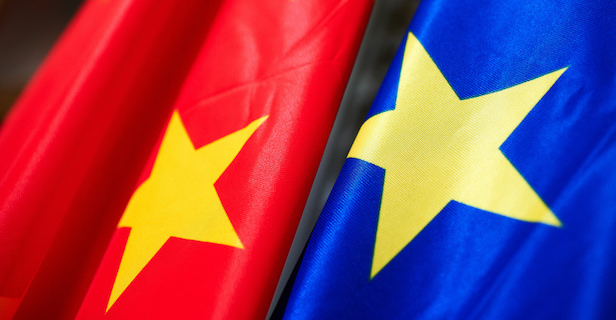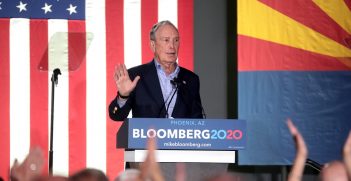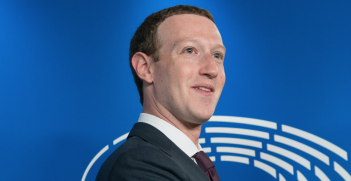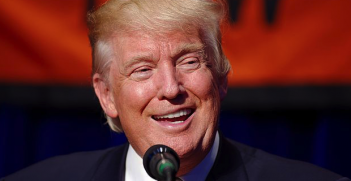New Directions for the EU in Asia

Tensions between the US and China, particularly following North Korea’s recent missile tests, are at dangerous levels. Rather than simply hope that the two superpowers will accommodate each other peacefully, the EU should be more engaged in promoting a stable economic and strategic environment in Asia.
The world held its breath as Donald Trump hosted Xi Jinping at his Florida estate for their first meeting earlier this month. On trade, seen beforehand as the most controversial topic on the agenda, the US and China agreed to defer the issue: there will be 100 days of trade talks and a state visit to China later this year.
But Xi’s visit was overshadowed by Trump’s missile strike against Syria midway through his stay. The Chinese reaction was muted, but one can be sure that Beijing, which does not like surprises, was not amused. Seemingly having acquired a taste for it, the US subsequently began to threaten a unilateral strike against North Korea, and we all held our breath again.
Is Trump stepping up the military dimension of the pivot to Asia that Obama initiated? Trump has confirmed America’s continued adherence to the One China policy, which initially he had questioned, because Xi requested him to. The US has also stated—presumably not following a request from Xi—that the disputed Senkaku/Diaoyu Islands between China and Japan are covered by its alliance with Japan.
Meanwhile, is there nothing that the European Union (EU) can do but hold its breath? Does it not also have the diplomatic and economic instruments to try and shape their environment, rather than watch how Trump and Xi are changing it?
A Chance with China
In the EU, Trump’s protectionist views have prompted many to suggest that China is now Europe’s main ally in upholding free trade. An export-dependent China is as worried as the EU, if not more. The US president has dealt the EU a trump card therefore: an opportunity to forge a closer but at the same time more balanced relationship with China.
EU Trade Commissioner Cecilia Malmström got it exactly right last February when she linked the fight against protectionism, in which the EU is ready to stand with China, with the ongoing negotiations on an EU-China investment treaty. For an equitable treaty to be possible, China needs to reform and open up to European investors.
But if the Chinese market is too closed, Europe’s is too open. Selling critical infrastructure without any limits enables China and other foreign powers to subvert EU decisionmaking. Will a newspaper in Russian hands still publish the news? Can a seaport in Chinese hands still be used to channel military reinforcements to NATO’s eastern borders in a crisis situation? Member states, notably Germany, have grown more concerned in the last year, but nobody is going to introduce limits unilaterally, for fear of seeing all investment redirected to its neighbours. A binding EU framework should set limits on foreign ownership of critical infrastructure. Once in place, a truly reciprocal EU-China investment treaty will be possible.
The EU and China can act together to maintain free trade, but China must be made to understand that its attempt to pressure its neighbours into accepting its sphere of influence in the South China Sea remains a brake on closer cooperation. The EU’s interest lies not so much in the substance of the resolution of the sovereignty claims—who owns which island is of little importance to the EU—as in their peaceful resolution without impacting the freedom of the global commons. The alternative, as China is perhaps beginning to understand, is a military stand-off with the US.
Getting this message across will require more unity and clarity on the EU’s part than its measly “acknowledgement” of the outcome of the arbitration procedure between China and the Philippines in July 2016. The way to contain power politics is “a rules-based global order with multilateralism as its key principle”, as the EU’s Global Strategy states. The UN Convention on the Law of the Sea (UNCLOS) and the peaceful resolution of disputes are as much a part of that order as free trade regimes and an investment treaty.
Until now, China has preferred to address maritime disputes with its neighbours in a bilateral context, where it can exert more power. However, were China to begin to behave as a responsible power, then for the EU it might not matter that in a certain part of the world China assumes responsibility for maintaining the freedom of the global commons instead of the US.
The EU, of course, should not rush into anything, lest it risk merely switching its subservience from Washington to Beijing. China remains an authoritarian regime: one becoming again more repressive, not less. Maintaining a critical stance on human rights is essential for the EU’s own legitimacy, but the EU should not hesitate to pursue its interests and step up cooperation with China at the same time.
Ambitions for Asia
The EU’s free trade agenda includes not only China but also Japan, India, ASEAN and others. Here is another potential trump card. At the same time as envisaging a military build-up, Trump has withdrawn from the Trans-Pacific Partnership (TPP), which would have been the economic foundation of US strategy in the region. Countries that were counting on the TPP to allow them to keep a critical distance from China remain at risk of being sucked closer into China’s orbit. China will not hesitate to move into this vacuum.
At a stroke, any future free trade agreements with the EU have gained real strategic importance, for there will be very few FTAs with western powers on offer. Because the EU can pursue an inclusive agenda that encompasses, rather than isolates, China, and because it is not a military player in Asia, its strategy can be palatable for all parties as a workable alternative to ratcheting up military tensions. That includes Canada, which is looking to Asia as the US administration questions the North American Free Trade Agreement (NAFTA), as well as Australia. Torn between its defence alliance with the US and its economic dependence on China, Australia has everything to gain from a détente in Asia. So does Japan, but Prime Minister Shinzo Abe is still pursuing the opposite strategy, moving ever closer to the US.
The precondition for an EU strategy along these lines to work is, of course, that the EU can conclude FTAs in the first place. In the wake of the chaotic decisionmaking on the Comprehensive Economic and Trade Agreement (CETA) between the EU and Canada, the EU must convince its partners that trade deals can still be made and it must convince its own public that those trade deals are vital to continued prosperity.
Professor Sven Biscop is director of the Europe in the World program at Egmont—The Royal Institute for International Relations in Brussels and he is a professor at Ghent University.
This article is published under a Creative Commons Licence and may be republished with attribution.





